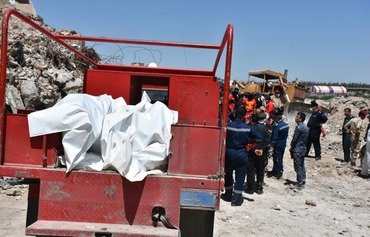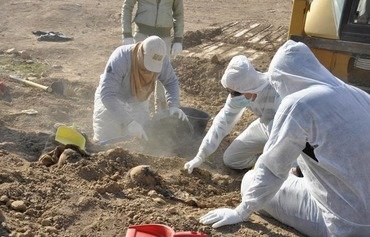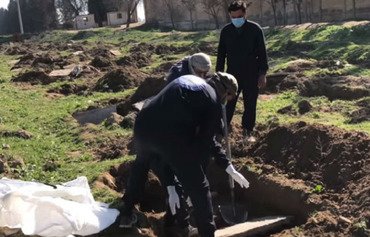The Iraqi Civil Defence Directorate has recovered about 4,800 bodies from under the rubble in Mosul since the city was liberated from the "Islamic State of Iraq and Syria" (ISIS) in July 2017.
"We have made great efforts in this regard and have made progress despite the difficulties posed by the large quantities of rubble left by the war, estimated in the millions of tonnes," civil defence director Col. Hussam Khalil Abed told Diyaruna Friday (May 15th).
Another challenge to these efforts lies in the danger of unexploded improvised explosive devices (IEDs) and mines found inside the ruined buildings, he said.
The civil defence teams have recovered about 4,800 bodies from the Mosul city centre and several villages in the city of Tal Afar and the town of al-Ayadiya in western Ninawa province.
"Most of the bodies were extracted from western Mosul, specifically from the Old City, which saw the fiercest fighting against [ISIS], with the help of the municipal department," said Abed.
About 2,500 of the bodies are of citizens who were killed in the operations.
They were found and identified with the help of clues provided by relatives and neighbours who had submitted reports declaring them missing, he said.
Some of the remaining 2,300 bodies are of ISIS elements who were killed in the fighting, while others are still not identified, he said.
Effort 'nears its end'
A Ninawa Civil Defence Directorate search and rescue team on Thursday recovered an unidentified body from under the rubble of a residential house in Old Mosul's Grand Mosque area.
The bodies are handed over to the forensic medicine department, and upon conducting the DNA test and identifying the bodies, they are then delivered to their respective families for proper burial, Abed said.
Unidentified bodies are buried in special graves and DNA samples are kept on file to help identify them at a later stage.
"Reopening any of these unknown graves is the prerogative of the court, the police and health departments," according to Abed.
Efforts to recover the bodies continue, he said, stressing that this effort "is nearing its end".

![Iraqi Civil Defence teams search for bodies among the rubble of destroyed buildings in Mosul on May 26th, 2018. [Photo courtesy of Mosul Eye]](/cnmi_di/images/2020/05/15/24074-Iraq-Mosul-rubble-600_384.jpg)






